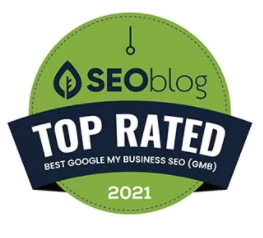Search engine optimization (SEO) is one of the most valuable marketing tools for businesses, both large and small. However, while traditional SEO can help drive traffic to your website, local SEO is best for companies with brick-and-mortar stores that depend on foot traffic.
Fortunately, you don’t need a massive marketing budget to take advantage of local SEO strategies. With some planning and creative execution, you can maximize your returns without spending a fortune. Here’s how to get started with affordable local SEO.
What is Local SEO?
Local SEO refers to ranking highly on searches within a specific geographic location. There are two primary types of local SEO. First, if a user searches for a keyword and adds a city, such as “tattoo parlor in Los Angeles,” the results will be filtered based on the results closest to the destination.
The second type of local SEO is when a user searches for something “near” them. Typically, this happens when someone searches on Google maps or uses their mobile device to do a regular Google search. In this case, the search engine uses location data to filter results based on where the user is at that moment.
The primary benefit of local SEO is that rankings aren’t necessarily based on site traffic or traditional SEO data. Instead, whether your business is relevant to the user’s search query and whether you’re close by matters. So, by focusing on local SEO marketing, you can improve your site and store traffic easily and much faster than waiting for organic SEO to do its thing.
How to Get Started with Local SEO and a Small Budget
Because local search results don’t rank the same as traditional searches, you don’t need a huge budget to get started. While it can help pay for PPC ads within a specific region, it’s better to build a strong SEO foundation first and then worry about paid ads.
Here are some of the top (affordable) tips on how to make local SEO work for you.
Claim Your Google My Business (GMB) Page
In its endless quest to index everything on (and off) the internet, Google creates listings for businesses, even if they don’t have a web presence. Unless you are really new (i.e., only a few days old), you already have a Google My Business listing. If you don’t, you can request one from the search engine. Remember that this listing is for physical businesses with an address that contacts customers in person. If you’re running an e-commerce business with no storefront or office, you won’t be able to get a listing.
A GMB listing allows you to control the information about your business as it’s listed on Google Maps and other products. The details you can provide include the following:
- Address – You must verify your business address; it can’t be a P.O. Box.
- Phone Number – If you have multiple business phone numbers, you should provide the one you want customers to call when they find your listing.
- Website – If you still need a website, you can leave this section blank.
- Hours of Operation – If you don’t have a storefront, you don’t need to list hours of operation. However, this information is crucial because it will affect whether new customers visit your business.
- Products – You can list top-selling products or services on your GMB listing. You can add your menu and pictures of individual dishes if you’re a restaurant or food service establishment.
- Photos – The more pictures you can include in your listing, the better. Visitors and customers can also upload their own images, serving as free marketing. When adding photos, include captions and pertinent information, so viewers know what they’re seeing.
- Reviews – While you can’t control who posts a review of your business, you can respond to reviews and notify Google of any fraudulent additions to your page.
Check Your Contact Info on Listing Sites
Listing sites (besides Google) are essential for your business because they can direct traffic to your storefront. Examples of these sites include Yelp, the Yellow Pages, Thumbtack, Angie’s List, and many more. Depending on your location and the industry you serve, you may also be on industry-specific sites.
While you can’t control what gets posted to these websites, you can reach out to submit accurate information. As a rule, directory pages want to be as up-to-date as possible, so if something needs to be corrected, they’re often more than willing to change those details as required.
Part of your long-term local SEO strategy should be to bookmark your listing on these sites and check in regularly (i.e., monthly or quarterly). This way, you can verify if the information is correct and see what users say about your brand. You can also create a business account in many cases, allowing you to update your details and respond to reviews or messages directly.
Bookmarking these sites also makes updating them easier when something changes. For example, maybe you’re opening a new location, or your hours of operation are changing. You can reach out to these websites as soon as you confirm these adjustments so the directory can be accurate as quickly as possible.
Add Your Name/Address/Phone Number (NAP) to All Pages
Your business name, address, and phone number are essential for local SEO. While other elements like your website and hours of operation are important, your NAP must be consistent everywhere it’s listed.
In addition to verifying your NAP on directory sites, you should also provide it on your own website pages. This way, as Google indexes your site, it can verify that each page relates to the same location, making it easier to map the entire site.
NAP information is also essential if you have multiple locations for the same brand. Since you want visitors only to see content from a place close enough, you can verify your NAP details on each page so Google will index them correctly. You can also include location information in other SEO spots like your meta title, meta description, URL, and title tags.
Curate Content for Location-Specific Landing Pages
When it comes to local SEO, you should include your location information within your site as much as possible. While you don’t want to engage in “keyword stuffing,” adding the city and your address can help search engines rank your business for local page results.
Another way to increase your brand’s visibility in local searches is to create location-based content and landing pages. For example, you can create blog posts about the city or state you’re in, and landing pages can be directed to residents near your storefront.
Overall, the more you can tailor your site pages to a specific location, the better your odds of ranking in one of the top five positions during a local search. If you don’t include these details, it’s harder for Google to know if your pages are relevant, so you’ll likely get pushed further down the list.
Solicit Reviews from Customers
One of the best ways to boost your profile for local search results is to have as many customer reviews as possible. While you can’t incentivize your customers to leave positive reviews, you can solicit them whenever you like. Typically, you want to reduce friction, so leaving a review is easy and painless. Also, it’s best to ask for them at the end of each transaction when the experience is still fresh in the customer’s mind.
There are a few ways to make it easier for clients to access your review page, such as:
- Q.R. Code – This option works well for in-person transactions where shoppers may have a smartphone and can submit a review ASAP.
- Link – If you correspond with clients via email, hyperlinks can make it easier for them to share their thoughts about your business.
- Button – Whether you’re selling products online or posting relevant content, a review button is an easy call to action for visitors to see and click.
Another point to remember is that you want to be proactive about scanning and responding to good and bad reviews. If someone has had a negative experience, you can reach out and offer to rectify (or clarify) the situation. If a customer had a fantastic experience, you could thank them for their business.
The more active you are on review pages, the more customers will see your responses, making them more likely to leave a review of their own. In some cases, these pages act as a forum where customers can interact with your brand and gather more information about what you have to offer.
Consider Affordable PPC Location Ads
One of the great things about pay-per-click ads is that you can set your daily budget. While you may have to pay a lot to rank for high-traffic keywords, you can be a bit more creative with local SEO. Here are some tips on how to maximize your ad spend when you have a limited budget:
- Spend More Time on Keyword Research – This step is crucial for ranking for traditional and local SEO. Pay attention to keywords that get decent traffic but may have less competition. This way, you can still outbid other brands without spending too much.
- Consider Your User’s Needs – If someone is looking for a business like yours near them, what is their likely objective? Are they looking for a specific product? Or perhaps they want a store that offers a type of product you offer. Make sure to customize your ads to address these needs – this way, customers are more likely to click. If you only post generic brand ads, they may not be appealing.
- Pay Attention to Your Competition – With local SEO, your competitors are other businesses within the same city or geographic area. So, research what you can offer that your competitors don’t, and make sure to leverage your unique value proposition in your ad.
FAQs About Local SEO
Now that you know the best tips on maximizing your search engine optimization strategy on a budget, let’s address some frequently asked questions about local SEO.
Do All Businesses Need Local SEO?
No, not all businesses need local SEO. Only brands with brick-and-mortar locations interacting with customers directly should invest in local SEO. E-commerce and online-only businesses don’t have to worry about local SEO because they can work with clients from anywhere in the world.
Is Local SEO Easier to Rank for Than Traditional SEO?
Yes, local SEO is easier to rank for than traditional SEO because rankings are based on proximity and relevance, not necessarily site traffic or domain rankings. Overall, you can expect a higher ROI from local SEO marketing, and you can likely get faster results than you would with organic optimization strategies.
What if I Have Multiple Business Locations?
Ideally, you can create individual business sites for each of your locations. However, if that’s not feasible, you can still generate landing pages centered around a specific city or area.
How Do I Update My Business Info on Another Website?
If you want to update your business information on another website, you can create a business account and change your information directly. In other instances, you may have to contact the website owner and request that they update your details.
Get Help with Affordable Local SEO With BizIQ
One of the most significant challenges of developing a comprehensive SEO strategy is the time it takes to do everything. You may think hiring a marketing agency would be too expensive, but you’re mistaken. BizIQ offers affordable rates and packages to suit your needs. Whether you’re a new startup or a legacy business that wants to boost its online profile, we can customize your package to achieve your desired results. Contact us today to find out more!










